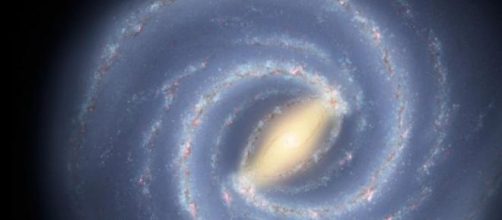"How is it formed a black hole so big so quickly?". The question of the coordinator of the study on the giant black hole - SDSS J010013.021280225.8 - Xue-Bing Wu, a researcher at the University of Beijing, China. The black hole, that still only have a code name, have a mass equivalent to 12 billion times that of the sun, and will have been formed 875 million years after the Big Bang, according refers to National Geographic.
A black hole is a region in space where gravity is so strong that nothing escapes him, not even light. The force of gravity is great because there is a lot of compressed matter in a small space.
Giant black holes can be part of the activity center of galaxies.
One theory for the formation of black holes is that they have formed after the collapse of giant stars, with several hundred times the size of the sun. The stars that formed and collapsed after the Big Bang were surrounded by gases that have been feeding the newly formed black holes. But this idea does not seem to work with such a black hole. The explosions of light in the quasar where would away the gas and dust instead of approaching them. A quasar means source of quasi-stellar radio emission (quasi-stellar radio source). Although actually emit very few radio waves, quasars are among the brightest and most distant objects that we can see.
Can be brighter than a galaxy, which has billions of stars. And usually have a giant black hole in the center.
But how do you see a hole?
To meet this giant, Xue-Bing Wu team had to point telescopes - in China, Hawaii, Arizona and Chile - to the quasar where the black hole is located. "This is the biggest monster ever detected in luminance," said Avi Loeb. This quasar is 40,000 times brighter than the Milky Way.

